Abstract
Rhodesian sleeping sickness and bovine trypanosomiasis were endemic in the Lambwe Valley of western Kenya, where the vector of both diseases was a tsetse fly Glossina pallidipes. Since a large resident population of game animals also inhabited the valley, a programme was designed to assess the relationships between game animals, tsetse, and trypanosome populations and the results were collated with some aspects of local human ecology and the general epidemiological situation in the valley. Of 134 game animals examined for trypanosome infections, 16.4% were found to be positive. This overall infection rate was similar to that found in cattle in the same area. T. brucei was the commonest trypanosome found in game animals, but the isolation of T. rhodesiense from a reedbuck (Redunca redunca) was of greater interest. Altogether, 90% of the bushbuck (Tragelaphus scriptus) examined were infected with animal trypanosomes; this is particularly significant since bushbuck was the preferred host of G. pallidipes and greatly influenced the distribution pattern and behaviour of the tsetse. It was concluded that the association existing between bushbuck and G. pallidipes was extremely important in creating disease foci and that the spread of infections to man was largely a result of poaching activities.
Full text
PDF
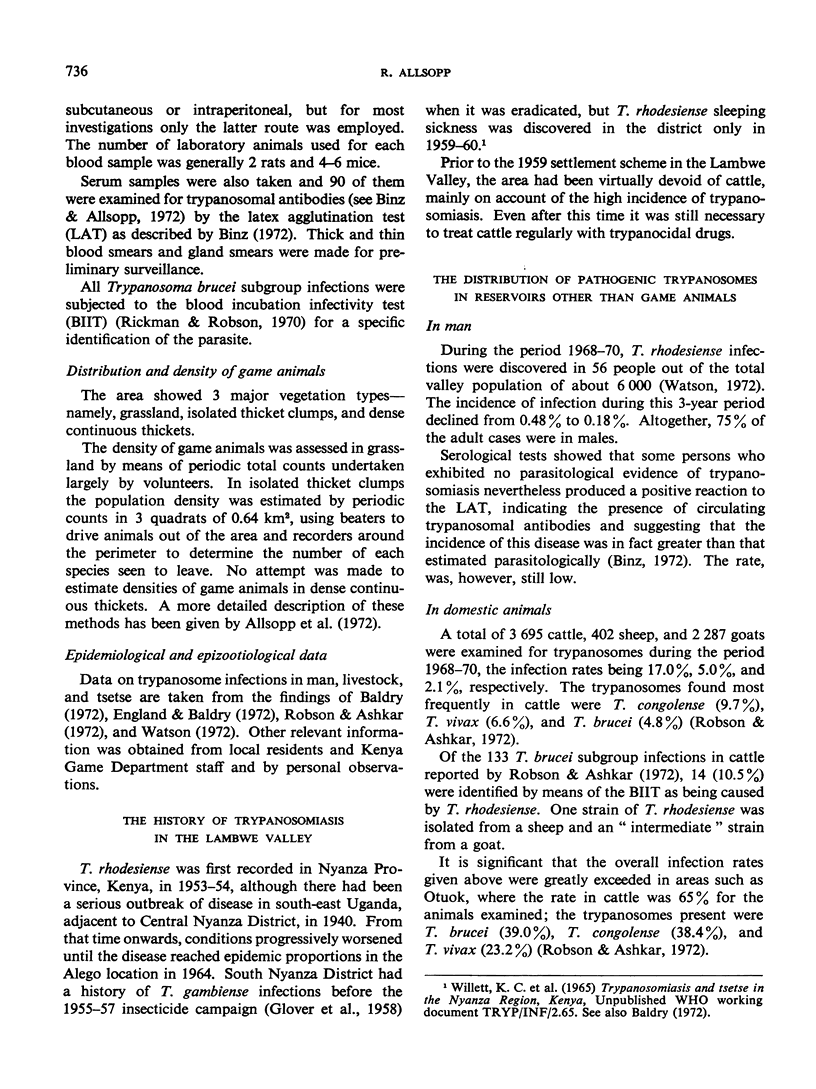
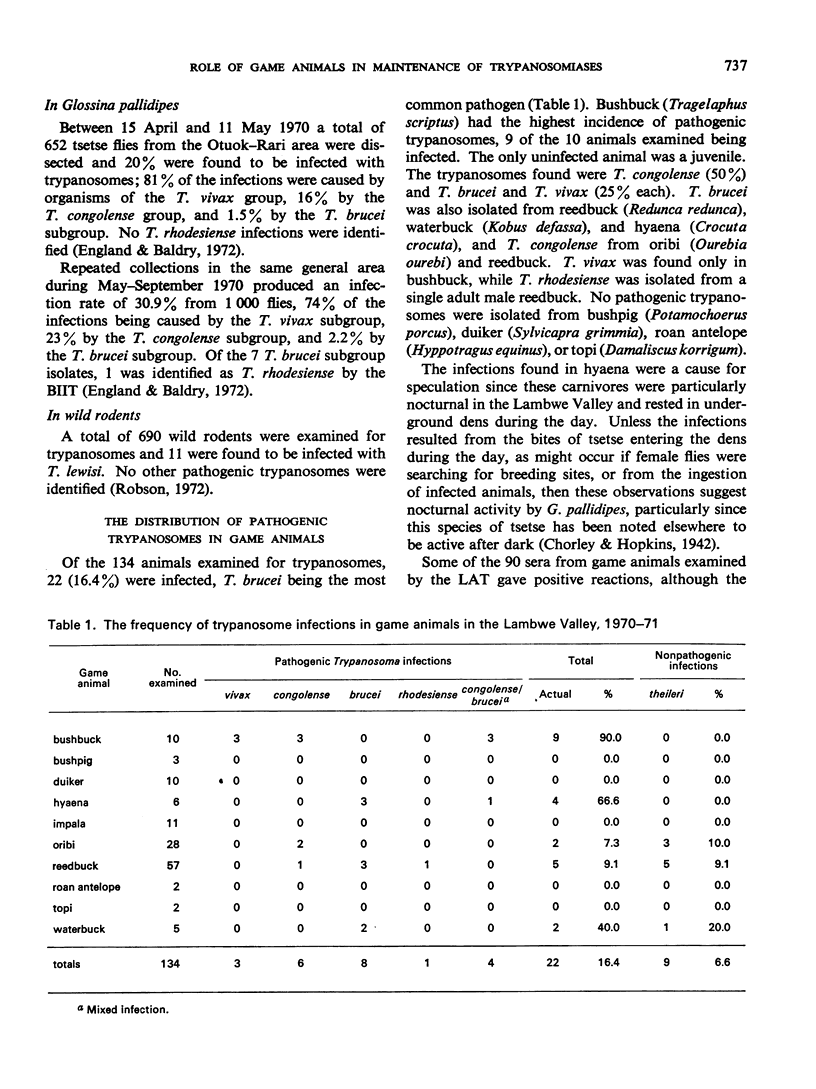
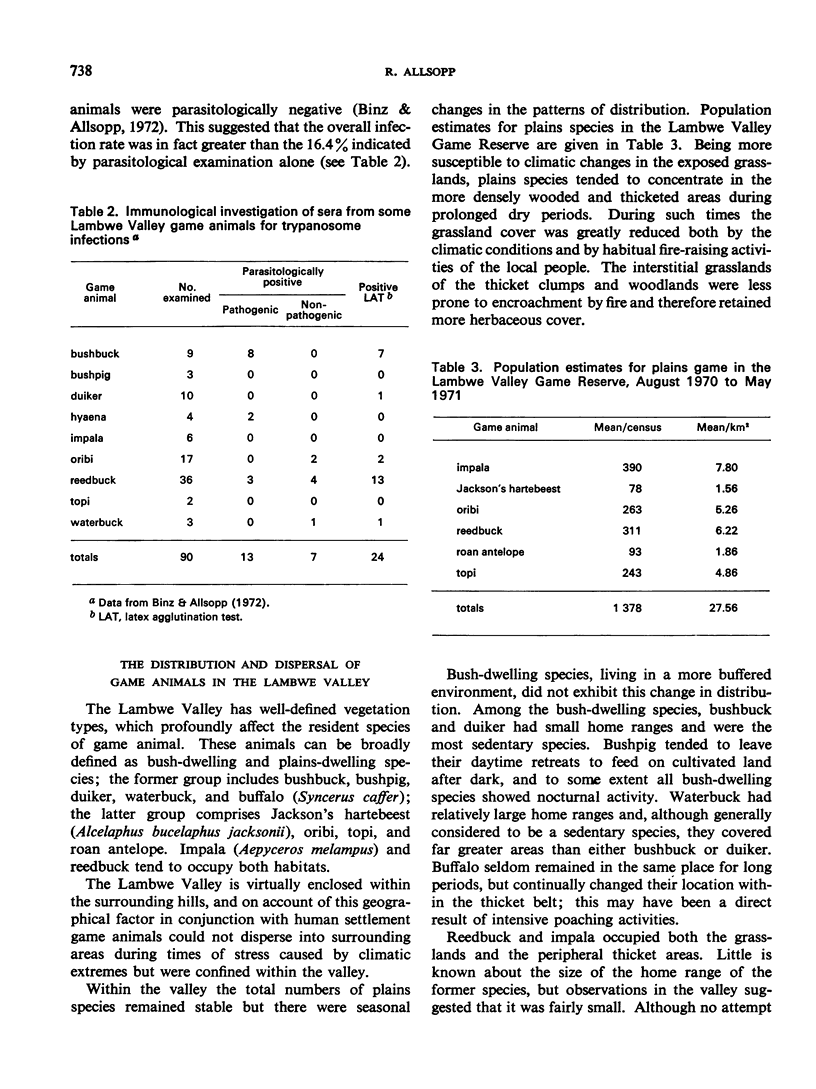
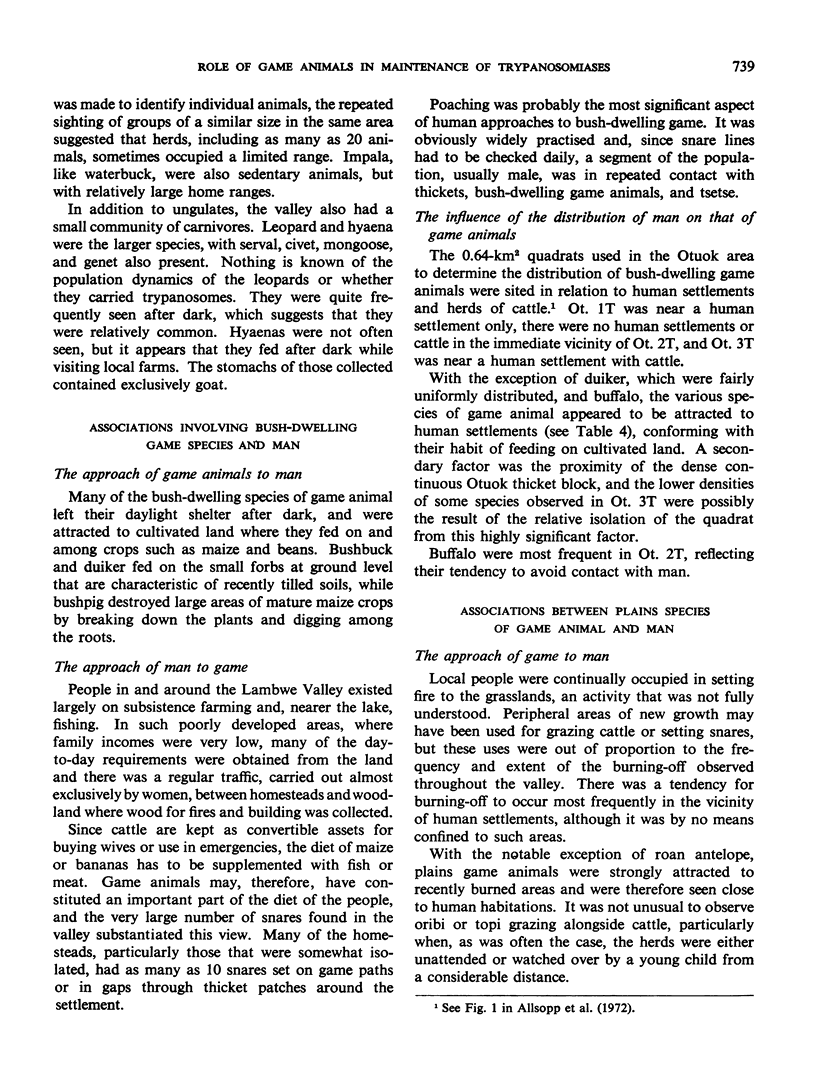
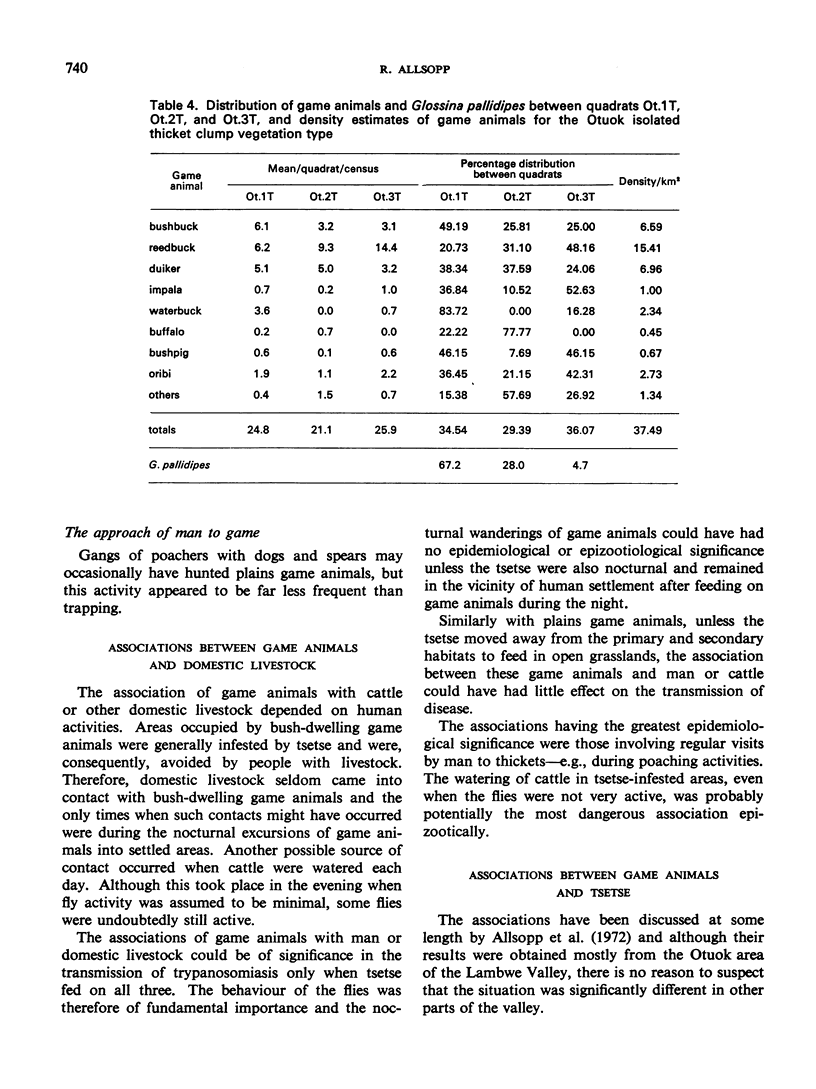
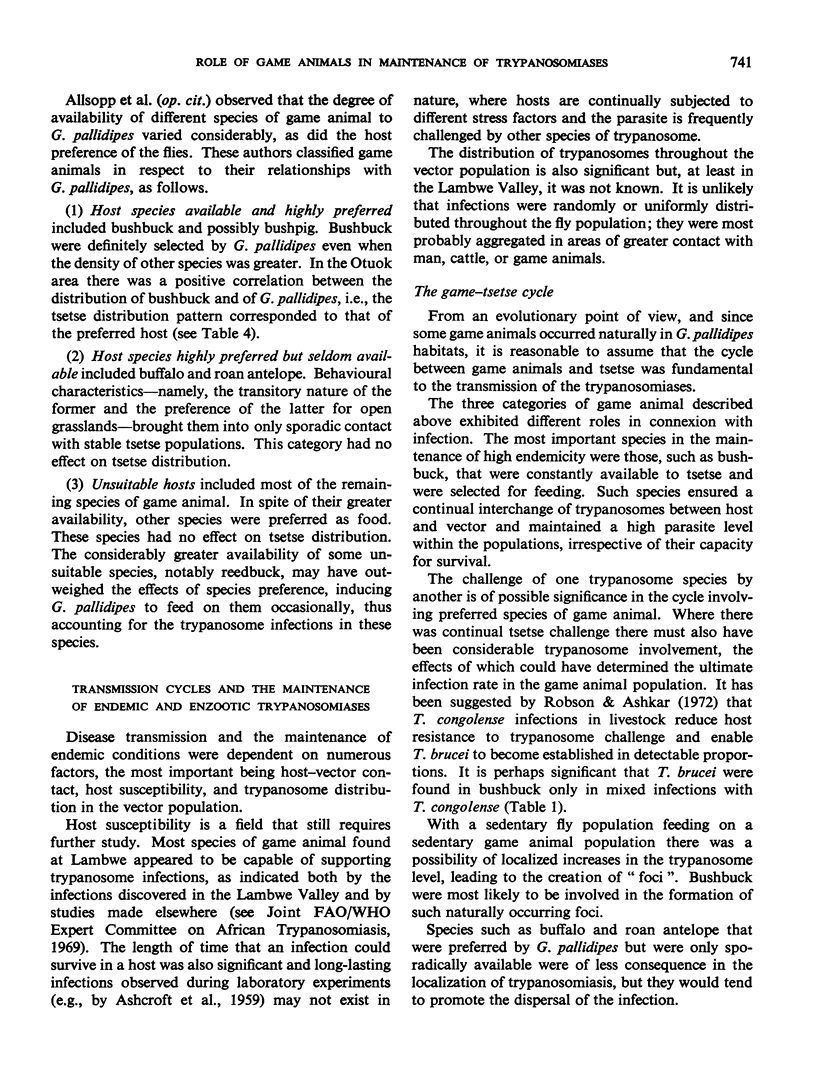
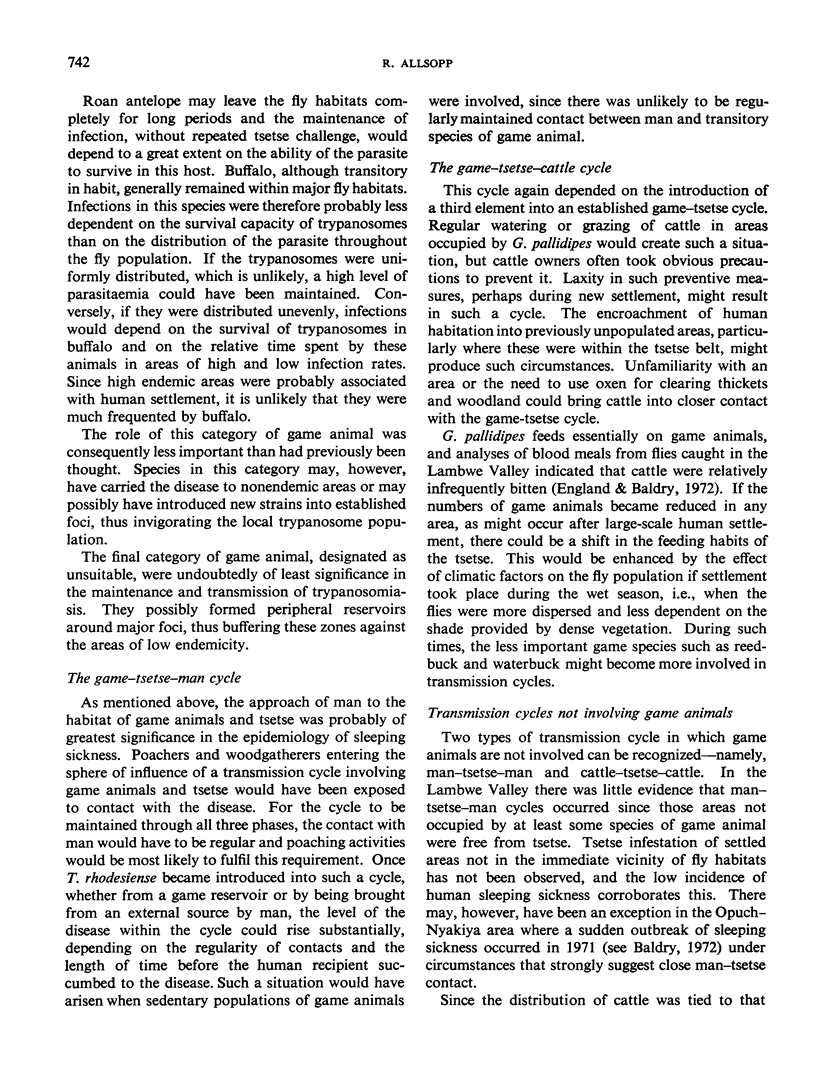

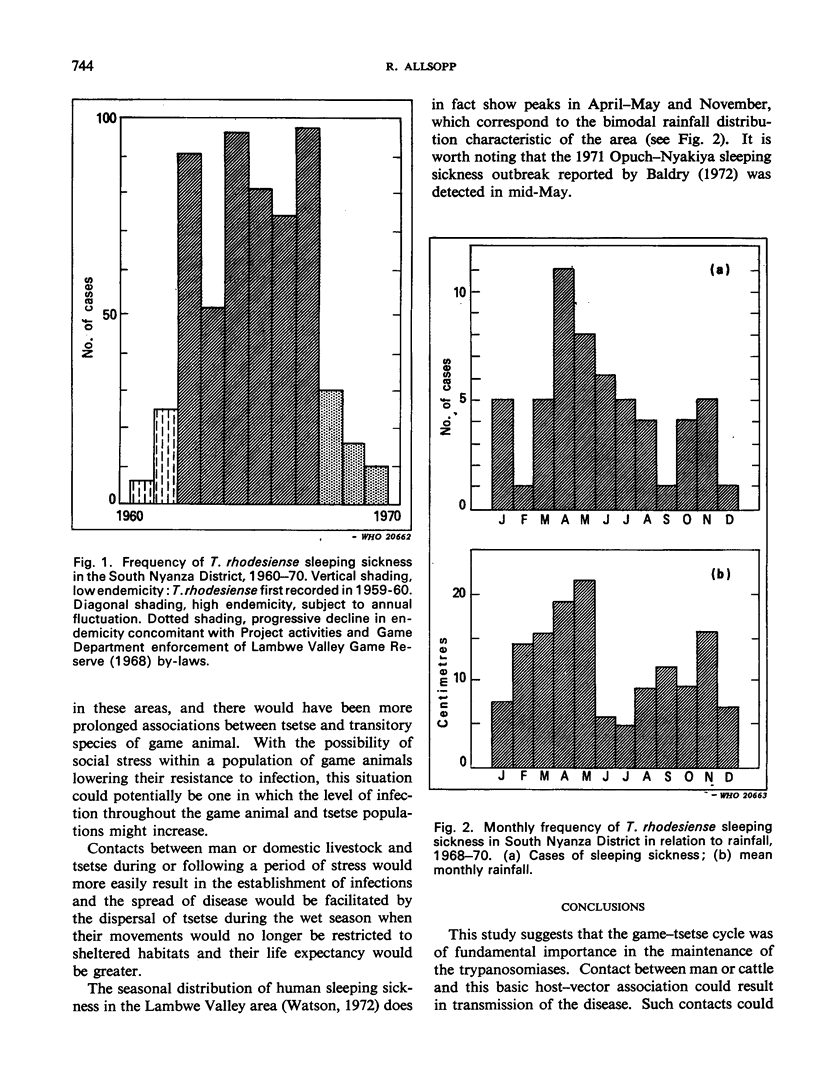
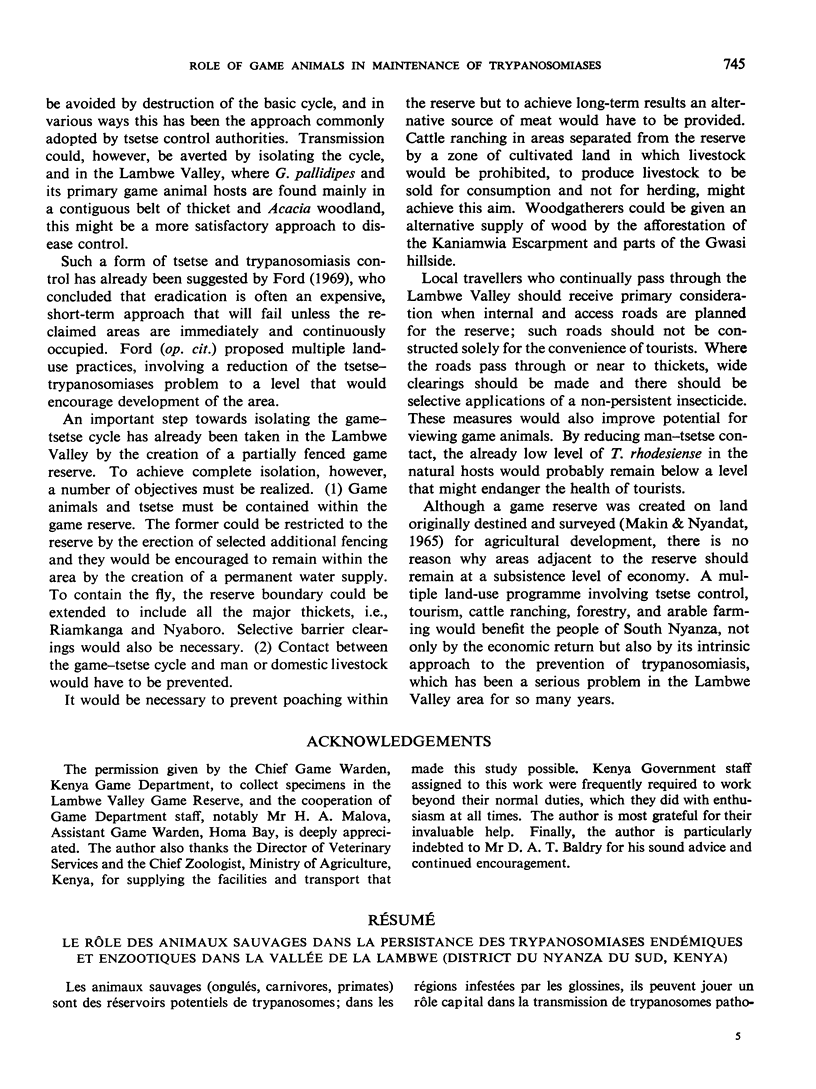
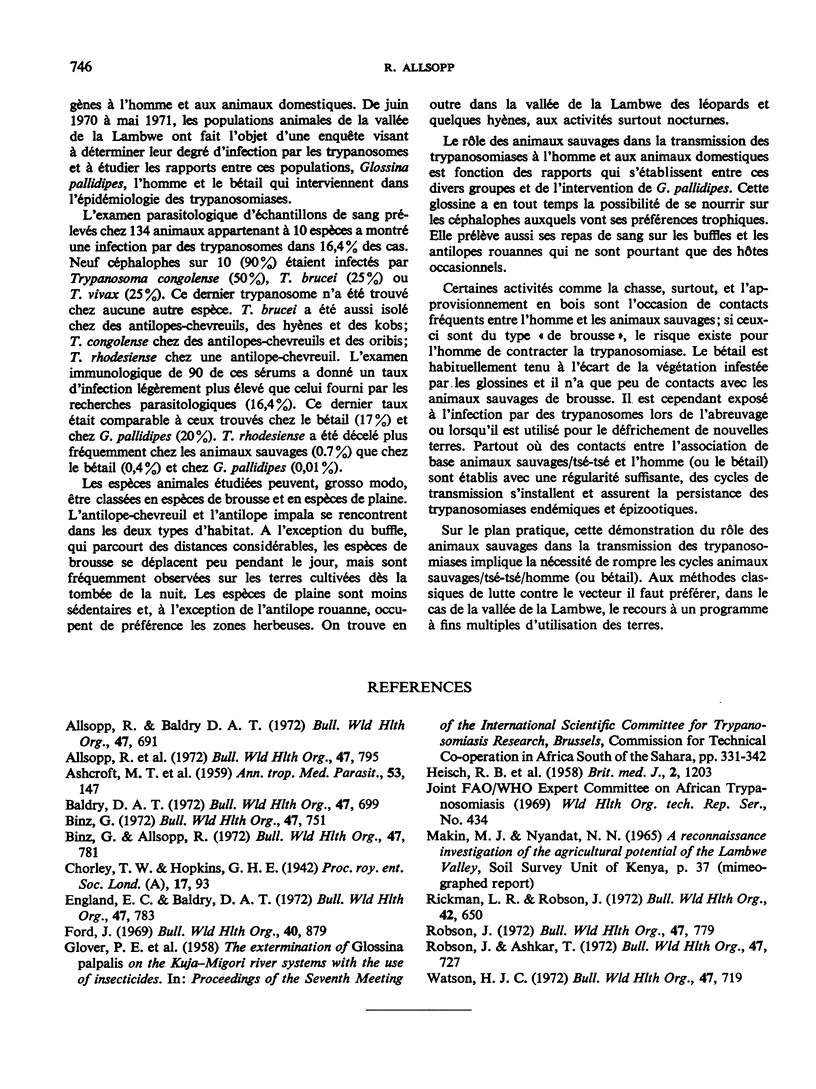
Selected References
These references are in PubMed. This may not be the complete list of references from this article.
- ASHCROFT M. T., BURTT E., FAIRBAIRN H. The experimental infection of some African wild animals with Trypanosoma rhodesiense, T. brucei and T. congolense. Ann Trop Med Parasitol. 1959 Jun;53:147–161. doi: 10.1080/00034983.1959.11685912. [DOI] [PubMed] [Google Scholar]
- Allsopp R., Baldry D. A. A general description of the Lambwe Valley area of South Nyanza District, Kenya. Bull World Health Organ. 1972;47(6):691–697. [PMC free article] [PubMed] [Google Scholar]
- Allsopp R., Baldry D. A., Rodrigues C. The influence of game animals on the distribution and feeding habits of glossina pallidipes in the Lambwe Valley. Bull World Health Organ. 1972;47(6):795–809. [PMC free article] [PubMed] [Google Scholar]
- Baldry D. A. A history of Rhodesian sleeping sickness in the Lambwe Valley. Bull World Health Organ. 1972;47(6):699–718. [PMC free article] [PubMed] [Google Scholar]
- Binz G., Allsopp R. Preliminary observations on the use of the latex agglutination test for detecting circulating trypanosomal antibodies in game animals in the Lambwe Valley. Bull World Health Organ. 1972;47(6):781–783. [PMC free article] [PubMed] [Google Scholar]
- Binz G. Observations on levels of immunoglobulin M in confirmed cases of Trypanosoma rhodesiense infection in the Lambwe Valley. Bull World Health Organ. 1972;47(6):751–755. [PMC free article] [PubMed] [Google Scholar]
- HEISCH R. B., McMAHON J. P., MANSONBAHR P. E. The isolation of Trypanosoma rhodesiense from a bushbuck. Br Med J. 1958 Nov 15;2(5106):1203–1204. doi: 10.1136/bmj.2.5106.1203. [DOI] [PMC free article] [PubMed] [Google Scholar]
- Rickman L. R., Robson J. The blood incubation infectivity test: a simple test which may serve to distinguish Trypanosoma brucei from T. rhodesiense. Bull World Health Organ. 1970;42(4):650–651. [PMC free article] [PubMed] [Google Scholar]
- Robson J., Ashkar T. S. Trypanosomiasis in domestic livestock in the Lambwe Valley area and a field evaluation of various diagnostic techniques. Bull World Health Organ. 1972;47(6):727–734. [PMC free article] [PubMed] [Google Scholar]


